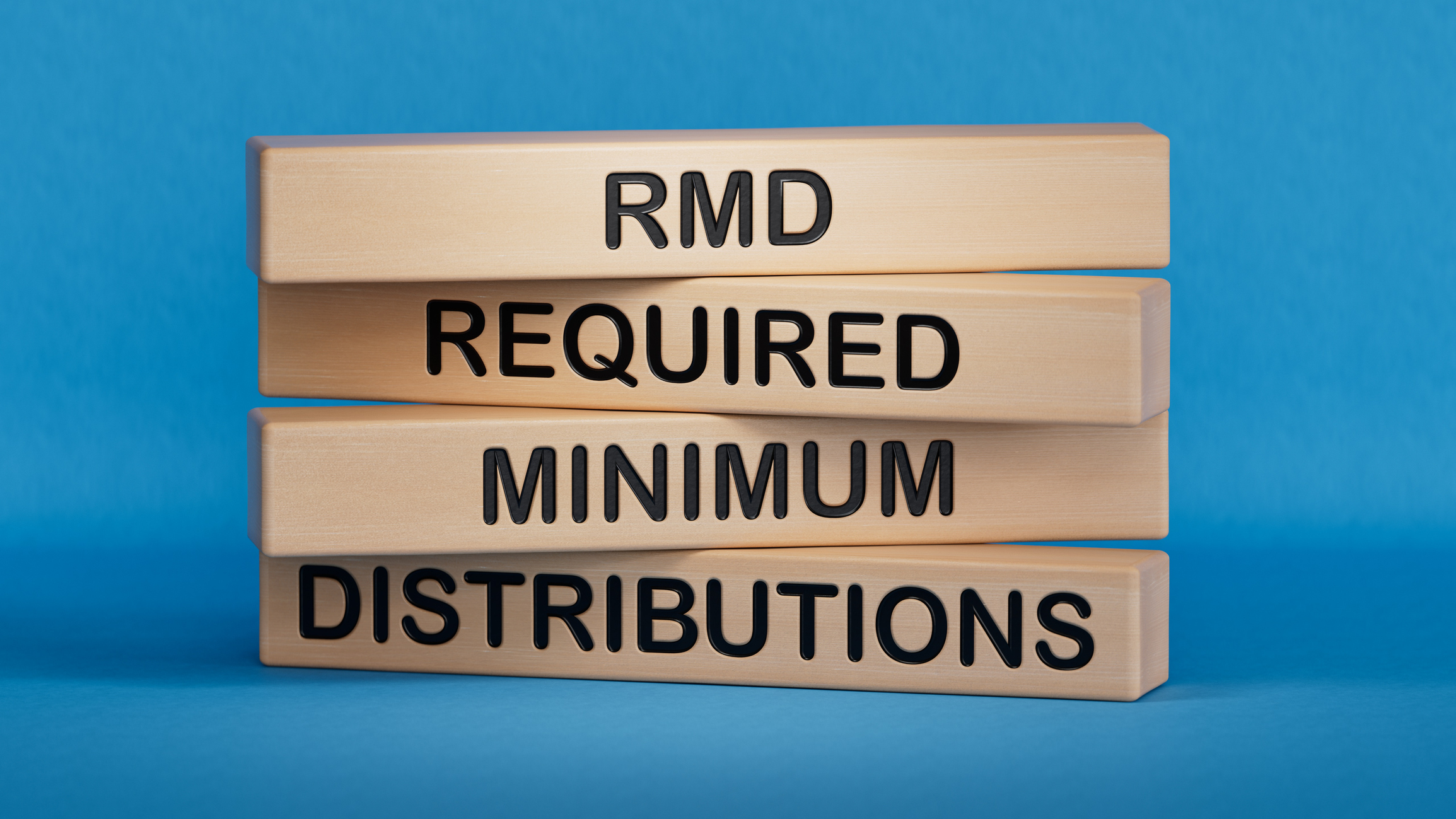2025-2026 Tax Brackets and Federal Income Tax Rates
Knowing your federal tax bracket is essential, as it determines your marginal income tax rate for the year.


Understanding federal tax brackets and how they work is key for effective financial planning, especially as you navigate your income, tax credits and deductions, and potential tax strategies.
So, let’s look at income tax brackets and marginal tax rates for 2024 (in case you haven't filed) and 2025, and for 2026 (just announced), beginning with some basics and key points.
Tax Brackets Overview
What are tax brackets?
Tax brackets are the ranges of income taxed at specific rates.
From just $107.88 $24.99 for Kiplinger Personal Finance
Be a smarter, better informed investor.

Sign up for Kiplinger’s Free Newsletters
Profit and prosper with the best of expert advice on investing, taxes, retirement, personal finance and more - straight to your e-mail.
Profit and prosper with the best of expert advice - straight to your e-mail.
There are seven federal tax rates: 10%, 12%, 22%, 24%, 32%, 35%, and 37%.
It's important to note that these rates generally don't change unless Congress passes major tax legislation. (That happened with the 2017 Tax Cuts and Jobs Act (TCJA, also known as the "Trump tax cuts.")
Note: In his second term as President, Donald Trump signed the so-called "big beautiful bill" into law on July 4, 2025. However, that legislation doesn't change the tax rates from the TCJA.
However, the tax brackets tied to the rates change yearly since they are adjusted for inflation.
These rates apply to your taxable income, which is your total income minus deductions and credits.
And here's the important part. Your entire income, thankfully, isn't taxed at the rate of your highest bracket. Instead, the United States uses a progressive tax system with marginal tax rates.
That means only the portion of your income that falls into each bracket is taxed at the rate applicable to that bracket.
Key Points
Marginal Rates: Your tax bracket represents the highest rate you'll pay on any portion of your income, not your entire income.
Inflation Adjustments: The income ranges for each bracket are adjusted annually for inflation, potentially moving you into a different bracket even if your income stays the same.
Filing Status: Your tax bracket depends on your filing status (single, married, filing jointly, etc.), and each status has different income ranges.
So, with all of that in mind, here are the tax brackets for 2024 and 2025. (The IRS also just released the 2026 tax brackets, which we've included as well.)
Further below, we consider some examples of how income tax brackets and marginal tax rates work.
2025 Tax Brackets
IRS 2025 tax brackets

For planning, here are the inflation-adjusted tax brackets for 2025. (Note: These brackets apply to federal income tax returns typically filed in early 2026.)
It's also essential to remember that, for now, the associated tax rates remain the same (currently 10%, 12%, 22%, 24%, 32%, 35%, and 37%).
Also, the IRS has announced the 2025 standard deduction, and the OBBB does increase that amount slightly. For more information, see The New Standard Deduction is Here.
Tax Rate | Taxable Income (Single) | Taxable Income (Married Filing Jointly) |
|---|---|---|
10% | Not over $11,925 | Not over $23,850 |
12% | Over $11,925 but not over $48,475 | Over $23,850 but not over $96,950 |
22% | Over $48,475 but not over $103,350 | Over $96,950 but not over $206,700 |
24% | Over $103,350 but not over $197,300 | Over $206,700 but not over $394,600 |
32% | Over $197,300 but not over $250,525 | Over $394,600 but not over $501,050 |
35% | Over $250,525 but not over $626,350 | Over $501,050 but not over $751,600 |
37% | Over $626,350 | Over $751,600 |
Tax Rate | Taxable Income (Married Filing Separately) | Taxable Income (Head of Household)) |
|---|---|---|
10% | Not over $11,925 | Not over $17,000 |
12% | Over $11,925 but not over $48,475 | Over $17,000 but not over $64,850 |
22% | Over $48,475 but not over $103,350 | Over $64,850 but not over $103,350 |
24% | Over $103,350 but not over $197,300 | Over $103,350 but not over $197,300 |
32% | Over $197,300 but not over $250,525 | Over $197,300 but not over $250,500 |
35% | Over $250,525 but not over $375,800 | Over $250,500 but not over $626,350 |
37% | Over $375,800 | Over $626,350 |
2024 Federal Tax Brackets
2024 tax brackets

If you haven't filed your 2024 federal income tax return (for most, that was due April 15, 2025) Here are the inflation-adjusted tax brackets for the 2024 tax year.
Tax Rate | Taxable Income (Single) | Taxable Income (Married Filing Jointly) |
|---|---|---|
10% | Not over $11,600 | Not over $23,200 |
12% | Over $11,600 but not over $47,150 | Over $23,200 but not over $94,300 |
22% | Over $47,150 but not over $100,525 | Over $94,300 but not over $201,050 |
24% | Over $100,525 but not over $191,950 | Over $201,050 but not over $383,900 |
32% | Over $191,950 but not over $243,725 | Over $383,900 but not over $487,450 |
35% | Over $243,725 but not over $609,350 | Over $487,450 but not over $731,200 |
37% | Over $609,350 | Over $731,200 |
Tax Rate | Taxable Income (Married Filing Separately) | Taxable Income (Head of Household)) |
|---|---|---|
10% | Up to $11,600 | Not over $16,550 |
12% | Over $11,600 but not over $47,150 | Over $16,550 but not over $63,100 |
22% | Over $47,150 but not over $100,525 | Over $63,100 but not over $100,500 |
24% | Over $100,525 but not over $191,950 | Over $100,500 butnot over $191,950 |
32% | Over $191,950 but not over $243,725 | Over $191,950 but not over $243,700 |
35% | Over $243,725 but not over $365,600 | Over $243,700 but not over $609,350 |
37% | Over $365,600 | Over $609,350 |
New: 2026 Tax Brackets

2026 tax brackets released by IRS
If you're tax planning, the IRS just revealed 2026 tax brackets. You'll use these numbers for tax returns typically filed in early 2027.
For more information, see: 2026 Tax Brackets Are Set: What to Know Now.
Tax Rate | Taxable Income (Single) | Taxable Income (Married Filing Jointly) |
|---|---|---|
10% | Not over $12,400 | Not over $24,800 |
12% | Over $12,400 but not over $50,400 | Over $24,800 but not over $100,800 |
22% | Over $50,400 but not over $105,700 | Over $100,800 but not over $211,400 |
24% | Over $105,700 but not over $201,775 | Over $211,400 but not over $403,550 |
32% | Over $201,775 but not over $256,225 | Over $403,550 but not over $512,450 |
35% | Over $256,225 but not over $640,600 | Over $512,450 but not over $768,700 |
37% | Over $640,600 | Over $768,700 |
Tax Rate | Taxable Income (Married Filing Separately) | Taxable Income (Head of Household)) |
|---|---|---|
10% | Not over $12,400 | Not over $17,700 |
12% | Over $12,400 but not over $50,400 | Over $17,700 but not over $67,450 |
22% | Over $50,400 but not over $105,700 | Over $67,450 but not over $103,700 |
24% | Over $105,700 but not over $201,775 | Over $105,700 but not over $201,775 |
32% | Over $201,775 but not over $256,225 | Over $201,750 but not over $256,200 |
35% | Over $256,225 but not over $384,350 | Over $256,200 but not over $640,600 |
37% | Over $384,350 | Over $640,600 |
Understanding How Marginal Tax Rates Work
Marginal tax rate definition: How do tax brackets work?
Now that you've seen the tax brackets, let's delve into some examples to show how the brackets and income tax rates work.
Suppose your filing status is single, and you had $100,000 taxable income last year. You may think that since $100,000 falls into the 22% federal bracket, your tax would be a flat $22,000. But thankfully, that’s not the case.
Instead, your $100,000 will be taxed at a marginal tax rate so that only some of your income is taxed at the maximum rate for your income that year (22%). The rest of your income is taxed at the federal income rates below 24%, i.e., 10% and 12%.
Here’s how the marginal tax rate works with this example:
- The first $11,600 of your income is taxed at the 10% rate.
- The next $35,550 of your income (i.e., the amount from $11,601 to $47,150, which will make sense when you see the tax brackets below) is taxed at the 12% federal rate.
- The following $52,850 of your income (from $47,151 to $100,000) is taxed at the 22% federal tax rate.
- That leaves $4,627 of your taxable income (the amount over $95,373) that is taxed at the 24% rate for your federal tax bracket.
Given marginal tax rates, the estimated total federal tax on your $100,000 of taxable income would be about $17,053. That is about $4,946 less than if a flat 22% federal tax rate applied to your entire $100,000 of income.
Remember: We're talking about federal tax. State tax rates and amounts due, if any, will vary.
The chart below shows estimates of how much of your income would be taxed at each rate.
Income Portion | Federal Rate Applied | Approx. Amount of Tax |
|---|---|---|
First $11,600 | 10% | $1,160 |
$33,550 | 12% | $4,266 |
$52,850 | 22% | $11,627 |
Total Estimated Tax: $17,053
Take another example of someone single with a taxable income for the 2025 tax year of $40,000. You might think your tax would be $4,800 since $40,000 falls into the 12% federal bracket. But that’s not the case.
Instead, your $40,000 will get taxed at a marginal tax rate, so only some of your income is taxed at the maximum tax rate for your income that year (12%). The rest of your income gets taxed at the federal income rate below 12%, i.e.,10%.
Here’s how the marginal tax rate works with this example:
- The first $11,600 of your income is taxed at the 10% tax rate.
- The next $28,400 of your income (i.e., the income between $11,601 to $40,000, which will make sense when you see the tax brackets below) gets taxed at the 12% federal rate.
Income Portion | Federal Tax Rate Applied | Approx. Amount of Tax |
|---|---|---|
First $11,600 | 10% | $1,160 |
$28,400 | 12% | $3,408 |
The total estimated federal tax of $4,568 is still a bit ($232) lower than the $4,800 you would be taxed if a flat 12% federal rate applied to your $40,000 of income.
The chart above shows estimates of how much of your income would be taxed at each rate.
Note: We're talking about federal tax. State tax rates and amounts due, if any, will vary.
Total Estimated Tax: $4,568
Marginal vs. effective tax rate: Key differences explained
It's important to know that the marginal tax rate and your effective tax rate differ. As mentioned, the marginal tax rate is the percentage of tax applied to the next dollar of income.
On the other hand, the effective tax rate is the overall percentage of income an individual pays in taxes after considering all deductions, exemptions, and credits.
To calculate your effective tax rate, divide the total taxes paid by the total taxable income. For example, if an individual earned $50,000 and paid $7,000 in taxes, their effective tax rate would be 14% ($7,000 / $50,000 = 0.14 or 14%).
If you have any questions about your tax liability, it's always a good idea to seek advice from a qualified tax professional or financial advisor.
Trump tax bill changes
No 'tax cliff' for tax brackets at the end of 2025
There had been a lot of interest in what might happen with tax brackets and federal income tax rates after 2025. That was due to the scheduled expiration of several key tax provisions in the TCJA at the end of this year.
Now that Trump and the GOP have enacted a new tax and spending megabill, many of the TCJA's provisions, including the overall lower tax rates, have been made permanent. (Though in the context of tax law, "permanent" often means the rates have been extended indefinitely, not that a future Congress can never change them.)
GOP lawmakers used the budget reconciliation process, which requires only a simple majority in the U.S. Senate, to pass legislation along party lines to address tax cuts, energy, and the border.
Key tax aspects of the new tax bill include making individual tax cuts permanent, maintaining the lower corporate tax rate, expanding certain business deductions, and temporarily increasing the cap on state and local tax deductions (SALT).
Related
Profit and prosper with the best of Kiplinger's advice on investing, taxes, retirement, personal finance and much more. Delivered daily. Enter your email in the box and click Sign Me Up.

As the senior tax editor at Kiplinger.com, Kelley R. Taylor simplifies federal and state tax information, news, and developments to help empower readers. Kelley has over two decades of experience advising on and covering education, law, finance, and tax as a corporate attorney and business journalist.
-
 Turkey, Tariffs, and Grocery Taxes: The Cost of Thanksgiving Dinner This Year
Turkey, Tariffs, and Grocery Taxes: The Cost of Thanksgiving Dinner This YearFood Taxes For some who celebrate, Thanksgiving can mean a full table, family, and a sense of gratitude. But in 2025, it also means a focus on the bottom line.
-
 Taxes on Investments: How Well Do You Know IRS Capital Gains Tax Rules?
Taxes on Investments: How Well Do You Know IRS Capital Gains Tax Rules?Quiz Take our capital gains tax quiz to test your investment taxes knowledge. Learn about loss rules, holding periods, and tax incentives that could impact your savings.
-
 Taxes on Investments: How Well Do You Know IRS Capital Gains Tax Rules?
Taxes on Investments: How Well Do You Know IRS Capital Gains Tax Rules?Quiz Take our capital gains tax quiz to test your investment taxes knowledge. Learn about loss rules, holding periods, and tax incentives that could impact your savings.
-
 6 Tax Reasons to Convert Your IRA to a Roth (and When You Shouldn't)
6 Tax Reasons to Convert Your IRA to a Roth (and When You Shouldn't)Retirement Taxes Here’s how converting your traditional retirement account to a Roth IRA can boost your nest egg — but avoid these costly scenarios.
-
 Could Tax Savings Make a 50-Year Mortgage Worth It?
Could Tax Savings Make a 50-Year Mortgage Worth It?Buying a Home The 50-year mortgage proposal by Trump aims to address the housing affordability crisis with lower monthly mortgage payments. But what does that mean for your taxes?
-
 3 Ways High-Income Earners Can Maximize Their Charitable Donations in 2025
3 Ways High-Income Earners Can Maximize Their Charitable Donations in 2025Tax Deductions New charitable giving tax rules will soon lower your deduction for donations to charity — here’s what you should do now.
-
 Another State Bans Capital Gains Taxes: Will More Follow in 2026?
Another State Bans Capital Gains Taxes: Will More Follow in 2026?Capital Gains A constitutional amendment blocking future taxes on realized and unrealized capital could raise interesting questions for other states.
-
 An HSA Sounds Great for Taxes: Here’s Why It Might Not Be Right for You
An HSA Sounds Great for Taxes: Here’s Why It Might Not Be Right for YouHealth Savings Even with the promise of ‘triple tax benefits,’ a health savings account might not be the best health plan option for everyone.
-
 Emergency Tax Bill Ends $6,000 Senior Deduction and Tip, Overtime Tax Breaks in D.C.
Emergency Tax Bill Ends $6,000 Senior Deduction and Tip, Overtime Tax Breaks in D.C.Tax Law Here’s how state tax conformity rules could immediately raise your income tax liability.
-
 New RMD Rules: Can You Pass This Retirement Distributions Tax Quiz?
New RMD Rules: Can You Pass This Retirement Distributions Tax Quiz?Quiz Take our RMD quiz to test your retirement tax knowledge. Learn about RMD rules, IRS deadlines, and tax penalties that could shrink your savings.